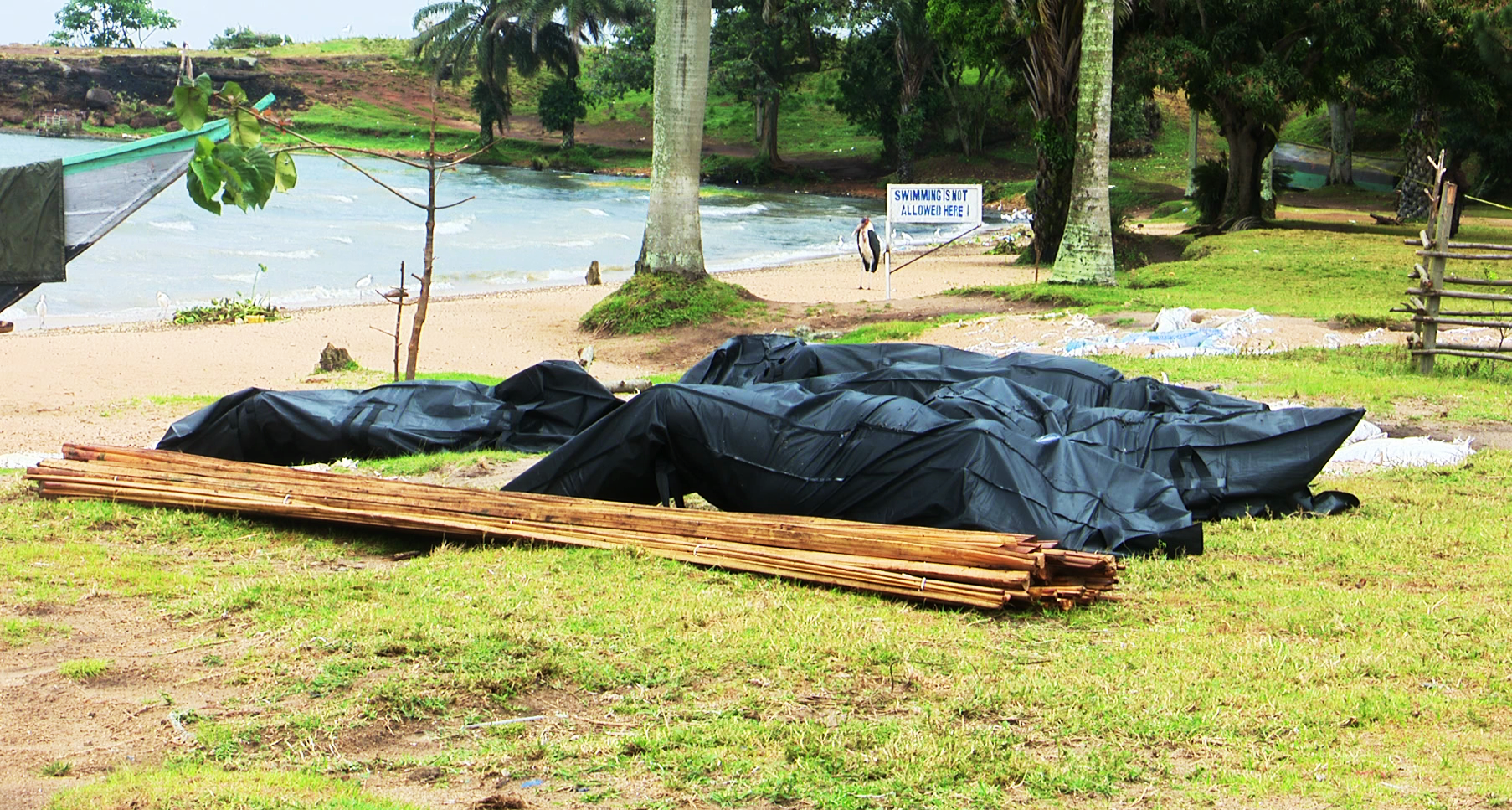What has changed three months after L. Victoria boat tragedy

MV Vanessa docks for the first time at Jaana Landing Site in Kalangala District recently. PHOTO | DAVID SEKAYINGA
What you need to know:
- In a bid to prevent future incidents, the Ministry of Works and Transport has since issued stringent directives to regulate marine transport, including passengers wearing life jackets and banning night travels for wooden boats carrying passengers and cargo.
As the survivors of the August 2 boat accident on Lake Victoria pick up the pieces, various efforts are being ramped up to avoid future recurrence.
At least 16 people are believed to have perished in the accident that occurred near Nsazi Island in Mukono District.
The wooden vessel, which was travelling from Kalangala District to Kasenyi landing site near Entebbe, Wakiso District, was reportedly overloaded. It was carrying an estimated 25 passengers, but only nine survived.
A joint rescue team of police and army marine personnel has in the last three months managed to retrieve 15 bodies and one body of Sharon Watsemba, 21, is still missing.
“We closed the search operation for the remains of the victims [of boat tragedy] recently after failing to trace the body of Watsemba,” Mr Bamunoba Ubaldo, the marine police commander, told Daily Monitor on Saturday.
In a bid to prevent future incidents, the Ministry of Works and Transport has since issued stringent directives to regulate marine transport, including passengers wearing life jackets and banning night travels for wooden boats carrying passengers and cargo.
All passengers are also supposed to register before sailing to their destinations and the marine police personnel have to monitor boats before they sail to prevent overloading.
Daily Monitor has learnt that apart from night travels that continue unabated, other measures are effectively being enforced.
On major landing sites such as Kasenyi in Entebbe, Wakiso, Lutoboka, Lwanabatya, Nkose and Katooke in Kalangala District, registration books of all boat passengers are visible at various landing sites and boat skippers leave them at the marine detaches after registration. At other landing sites in Kalangala, boat owners are the custodians of registration books for passengers.
“We register every passenger boarding a boat and there after give them life jackets before we sail but we have noted that these life jackets they currently use are not of the recommended standard, considering the size and weight of our customers,” Mr Yusiya Nkunyingi, a boat operator on the Bukasa- Buggala island route, said.
“That is why we request government to help us in providing the right life jackets,” he added.
New vessels
In addition to traditional wooden boats, the Ministry of Works and Transport last week gave a green light to two modern vessels (MV Vanessa and MV Nathalie) to start plying the busy Kasenyi-Bukasa route, which has in the past recorded most of the fatal boat accidents on Lake Victoria.
MV Vanesa and MV Nathalie, both managed by Nyanza Evergreen Waterways, are docking at the landing sites of Bubeke, Lwaazi on Bubeke Island, Lwanabatya, Buyange on Bukasa Island and Jaana Island.
This means people living near the four gazetted docking sites will also be able to connect from there in just 15 minutes.
Mr Augustine Kibaya, the operations manager at Nyanza Evergreen Waterways, said they are closely working with wooden boat operators since the two vessels work from Monday to Friday, for the start.
“We are not here to push them [wooden boat operators] out of business but to strengthen their work for the good of all islanders and tourists,” he said.
According to Mr Henry Ssebunya, the Kalangala deputy resident district commissioner, bringing the two vessels on board is a temporary remedy as the government works out a plan to procure a big public vessel plying the Kasenyi-Bukasa route.
“ ... some boat operators were still travelling at night, so as a government, we decided to work with Nyanza Evergreen Waterways company to provide a much safer means of transport for our people as we wait for the official vessel,” he said.
To make navigation of the two vessels easy, Kalangala leaders have written to the Ministry of Works and Transport to remap black spots on Lake Victoria.
Ms Hellen Nakimuli, the woman MP for Kalangala District, said there are still many dangerous rocks and impassable routes on the lake, which destroy boats.
“Government last mapped black spots on Lake Victoria in the 1990s; however, with the decrease in water levels, new black spots have emerged and that is why we want fresh mapping of these black spots and labelling them with reflectors for easy navigation of vessel operators,” said.
The Office of the Prime Minister on October 22 launched Kalangala District disaster management and preparedness committee for a much quicker information flow of all disasters on the islands.
“After the launch we set up sub-county, parish and village disaster management and preparedness committees for faster information flow, especially on likely disasters relating to hail storms that may result in water accidents,” Mr David Omongoti, the Kalangala District disaster management committee focal person, explained.
Despite the new measures in place, fishermen believe there is still more that the government should do, especially on the quality of boats and navigation skills of boat skippers.
“We welcome the two private vessels but the situation will get better when we get public vessels, which charge relatively low fares. Also, the threat of old wooden boats and their inexperienced skippers is still there, those boats need thorough inspection and skippers trained,” Mr Samuel Ssekimwanyi, a resident of Lwanabatya, said.




